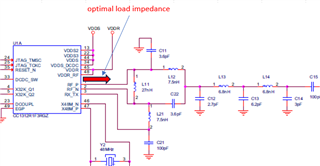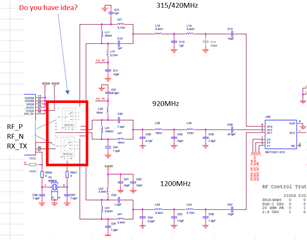Other Parts Discussed in Thread: CC1312R
Thank you for answering
[question 1]
We found that the optimal load impedance for the circuit below is:
optimun Load Impedance (40 + j15 Ω) @ 868MHz on swra640g.pdf page 29
So, what is the optimum load impedance for 315MHz, 430MHz, 920MHz, and 1200MHz?

[Question 2]
I understand that designing a broadband balun is difficult.
For example, is it possible to consider using a switch as shown below?
If you have any ICs made by TI that could be used, please let me know.

best regards


